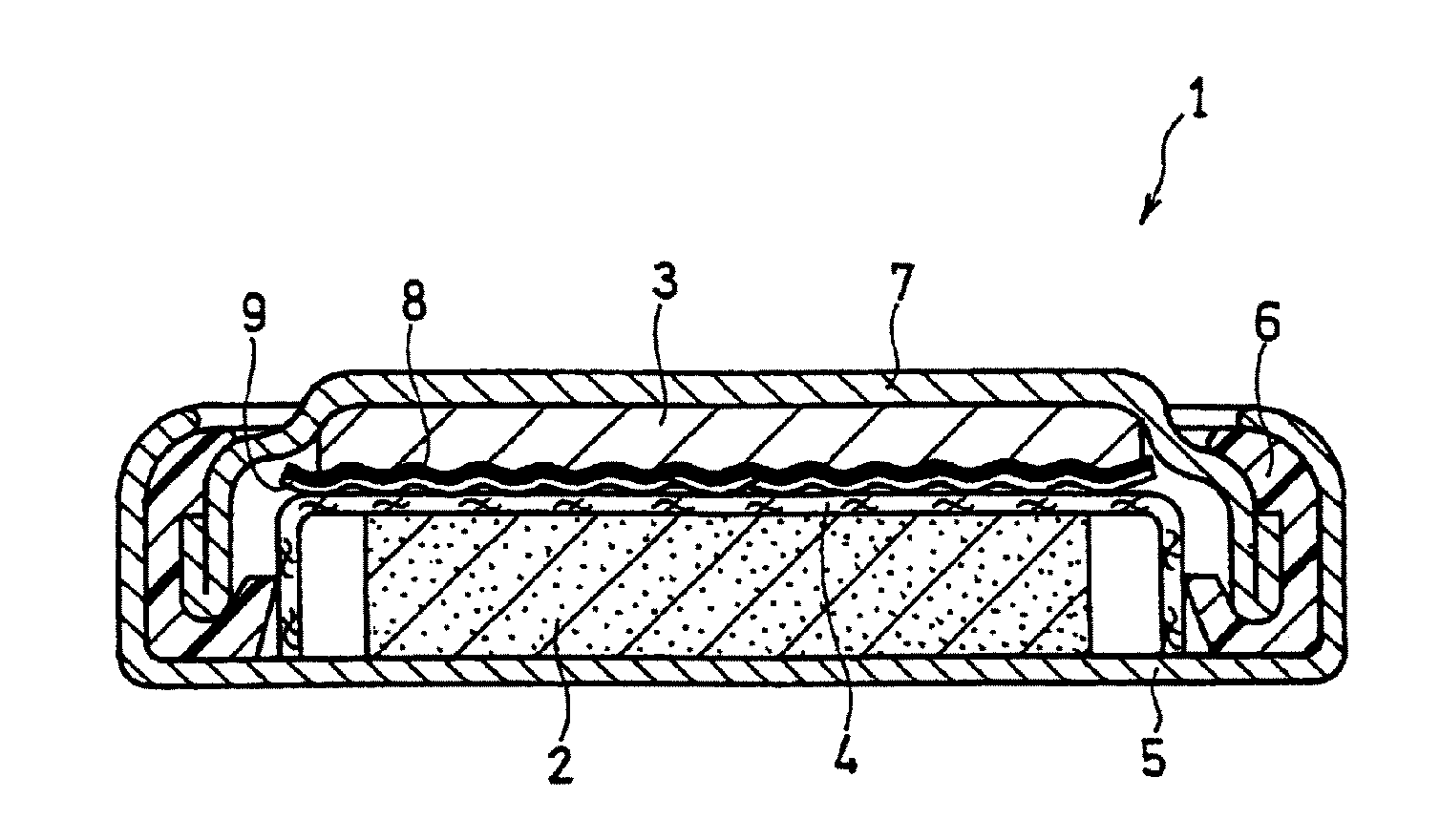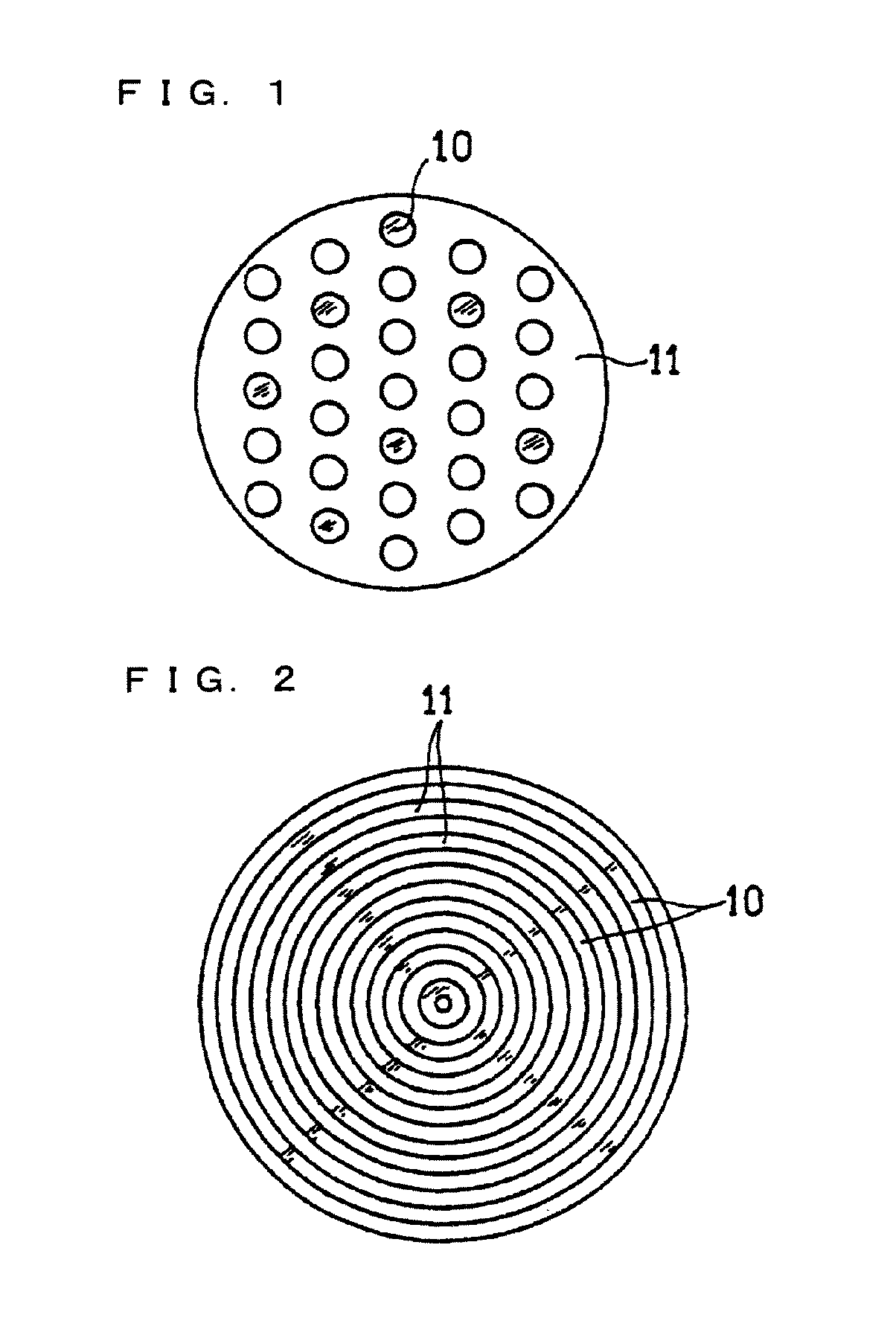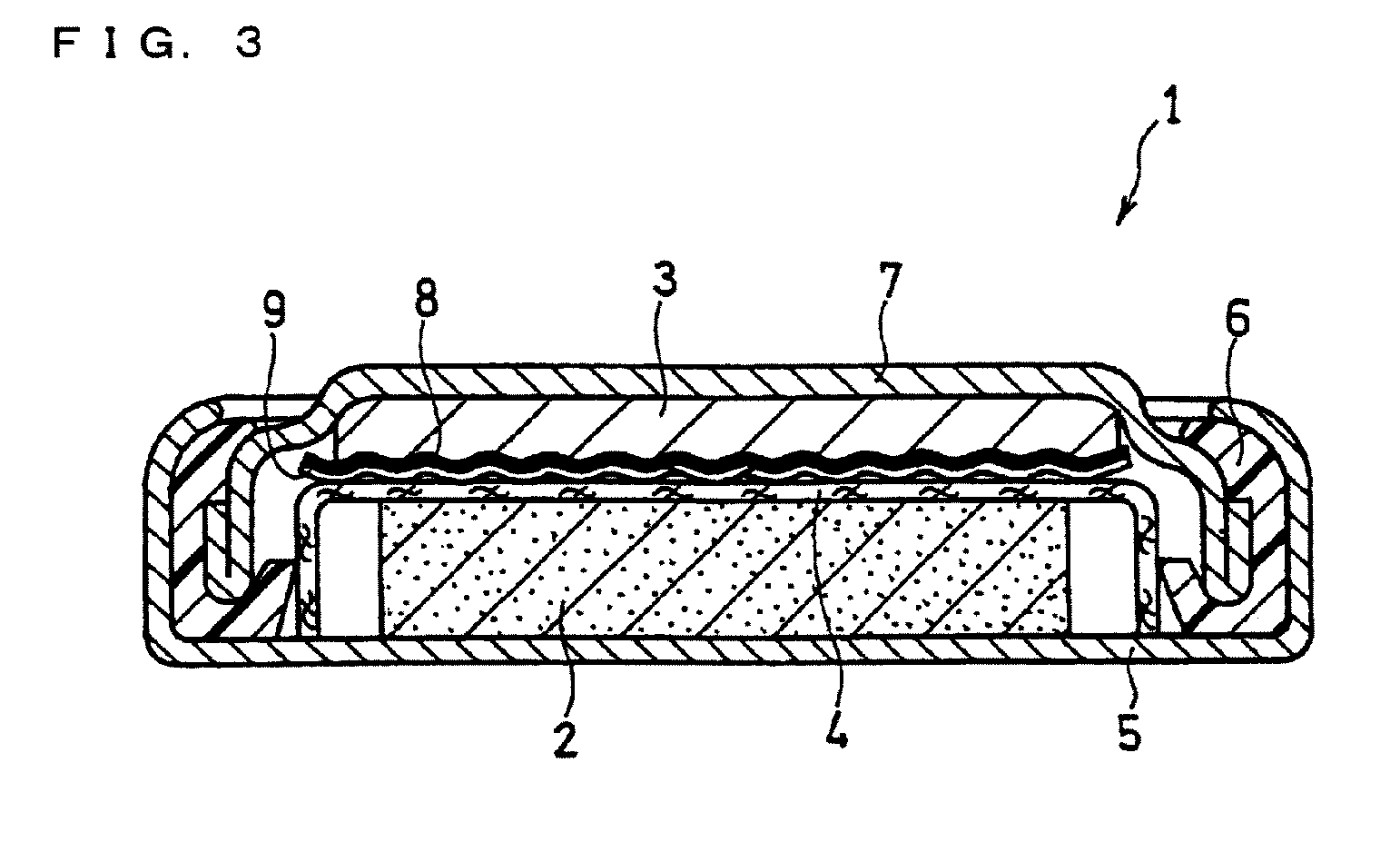Lithium primary battery and method of producing same
a primary battery and lithium technology, applied in the field of lithium primary batteries, can solve the problems of deteriorating discharge characteristics, significant decline of discharge characteristics, and impaired battery reaction, and achieves the effect of suppressing the increase in resistance of the negative electrode, uniform thickness, and high adhesiveness
- Summary
- Abstract
- Description
- Claims
- Application Information
AI Technical Summary
Benefits of technology
Problems solved by technology
Method used
Image
Examples
example 1
[0112]A coin type lithium primary battery of FIG. 3 was produced in the following manner.
(1) Production of Carbon Material Layer
[0113]Ethanol was added to a powder of acetylene black (Denka black, available from Denki Kagaku Kogyo K.K., average particle diameter of primary particles: 35 nm) as the carbon material, and mixed sufficiently. Further, water and polyacrylic acid as a binder (10 parts by weight relative to 100 parts by weight of acetylene black) were added to the mixture and mixed sufficiently, thereby obtaining a mixture in a paste form. A predetermined amount of the obtained paste was applied onto a nonwoven cloth made of polypropylene (thickness: 80 μm), and this was vacuum dried at 25° C. for a day and was perforated into a circle of Φ15.0 mm, thereby producing a composite component having a nonwoven cloth 9 and a carbon material layer 8 formed thereon.
[0114]The weight of the carbon material per unit area of the carbon material layer was determined by subtracting the w...
examples 2 and 3
[0123]A negative electrode 3 with a composite component adhering to a surface thereof was produced in the same manner as in Example 1 except that a pressing tool having convex portions of different heights was used. The heights of the convex portions on the surface of the pressing tool are shown in Table 1.
[0124]Lithium primary batteries (batteries 2 and 3) were produced in the same manner as in Example 1 except for using the obtained negative electrode.
example 4
[0125]A composite component was produced in the same manner as in Example 2 except for using a powder of carbon black (trade name: Carbon ECP, average particle diameter of primary particles: 39.5 nm, available from Lion Co., Ltd.) in place of the powder of acetylene black.
[0126]A lithium primary battery (battery 4) was produced in the same manner as in Example 1 except for using the obtained composite component.
PUM
| Property | Measurement | Unit |
|---|---|---|
| thickness | aaaaa | aaaaa |
| thickness | aaaaa | aaaaa |
| depth | aaaaa | aaaaa |
Abstract
Description
Claims
Application Information
 Login to View More
Login to View More - R&D
- Intellectual Property
- Life Sciences
- Materials
- Tech Scout
- Unparalleled Data Quality
- Higher Quality Content
- 60% Fewer Hallucinations
Browse by: Latest US Patents, China's latest patents, Technical Efficacy Thesaurus, Application Domain, Technology Topic, Popular Technical Reports.
© 2025 PatSnap. All rights reserved.Legal|Privacy policy|Modern Slavery Act Transparency Statement|Sitemap|About US| Contact US: help@patsnap.com



